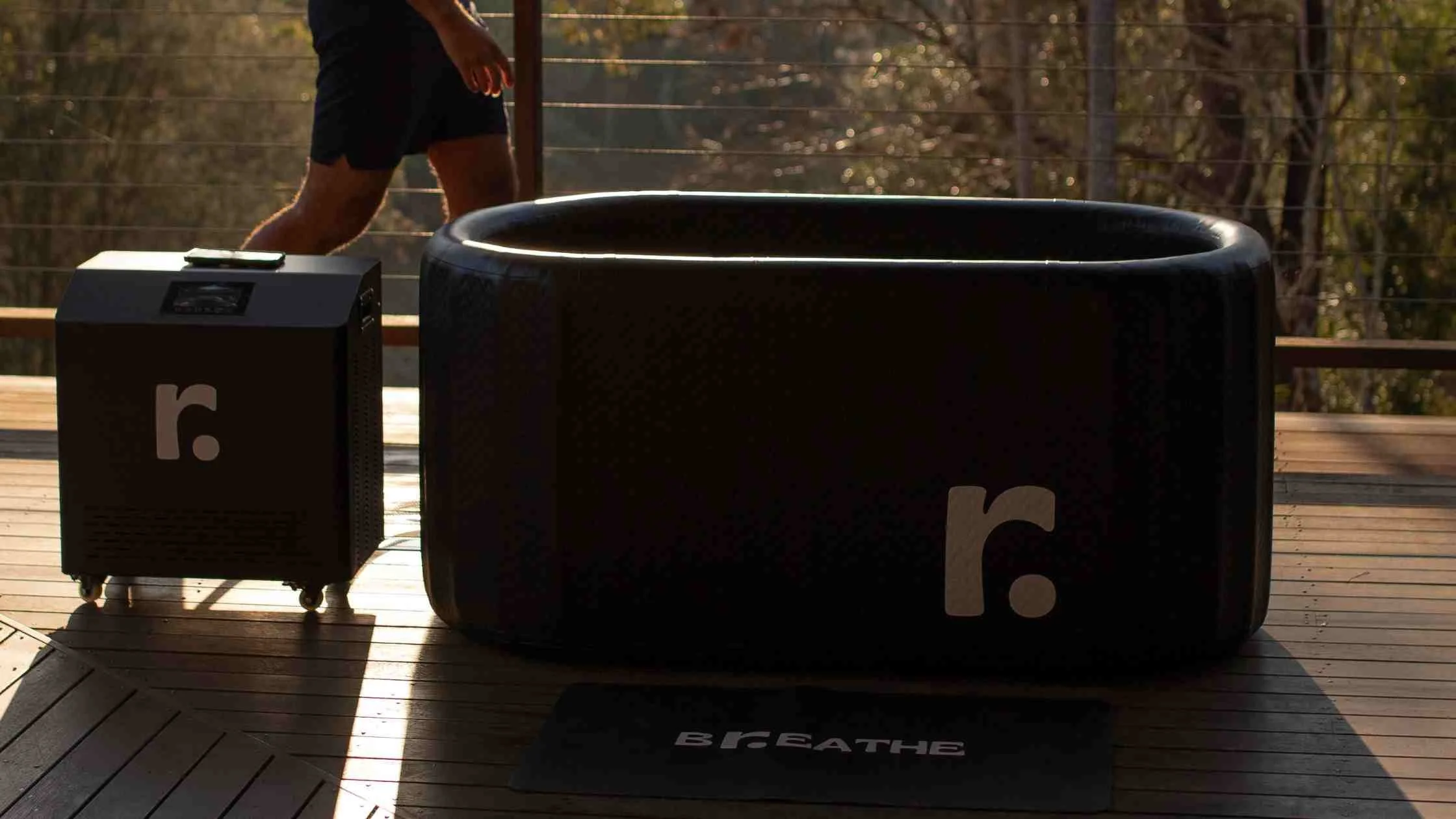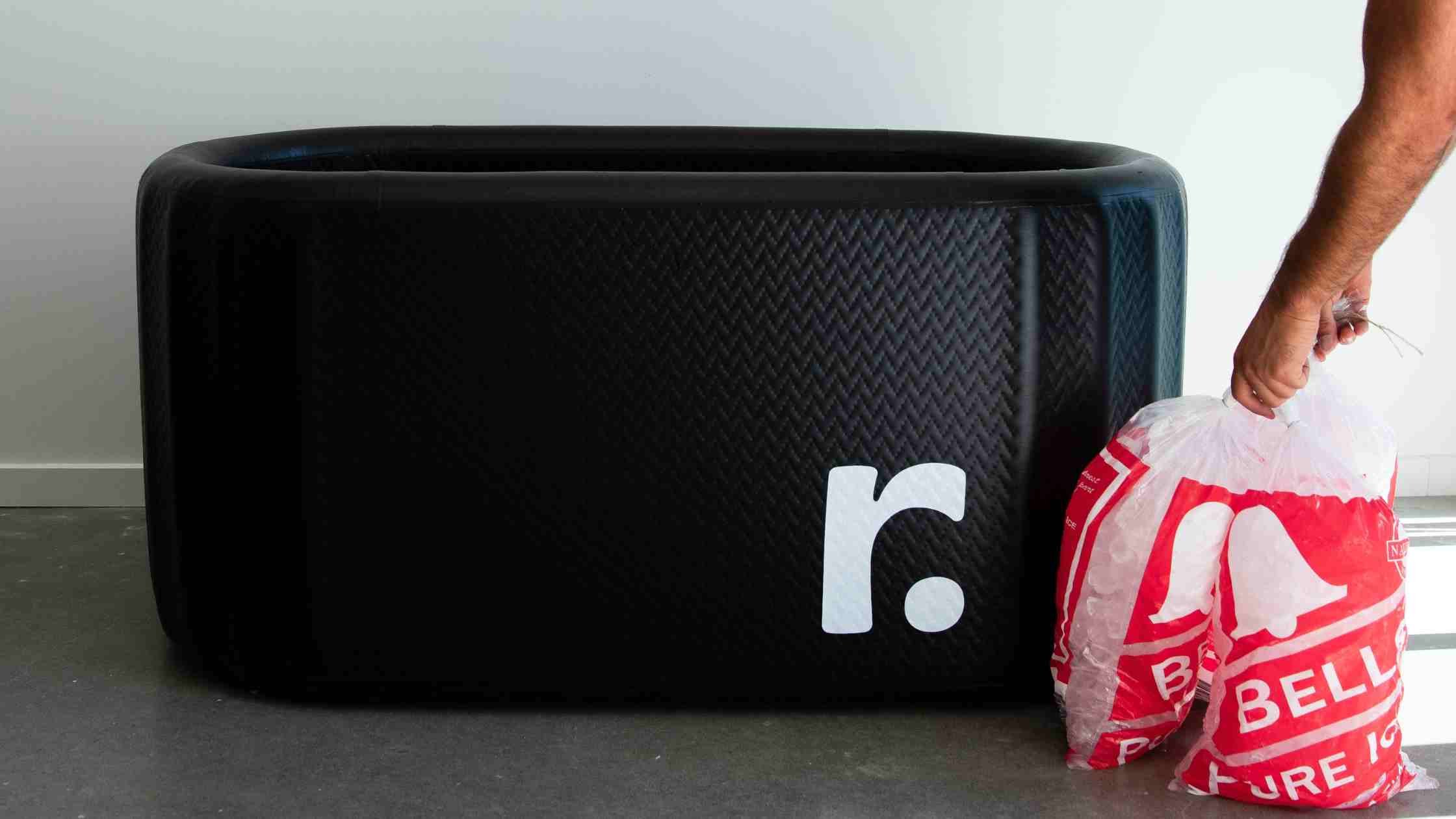Ice Bath Temperature – How Cold and How Long Should A Cold Plunge Be?
We have loved watching cold plunge become a daily ritual for more and more people over the years. No longer are ice baths exclusive to the performance athlete looking to hack their recovery for repeated performance, with people around the world opting for a morning ice plunge to replace the morning coffee, or as a social gathering.
But, how cold should your ice bath be? This is a question we have heard asked over and over. The truth, it depends?
Ice baths have surged in popularity, becoming a cornerstone of holistic wellness practices. A plunge into icy waters will be different for everyone, based on cold conditioning, tolerance and goals.
We delve into the ideal ice bath temperature, methods for maintaining the chill, the potential health risks associated with cold exposure, and a the main thing to aim for when deciding on how cold to set your ice bath – shiver response.
What is the Ideal Temperature of an Ice Bath?
The reality is, the best ice bath temperature will be different for every person. The ideal ice bath temperature will even be different for the same person day to day, based on their current stress levels, tolerance , how well they slept and the state of their nervous system.
While ice bath temperature is essentially individual, the agreed-upon temperature for an effective ice bath typically rests below 60 degrees Fahrenheit (15 degrees Celsius).
This temperature range sparks a cascade of physiological responses, contributing to the coveted mental and physical benefits.
Seasoned ice bath enthusiasts often explore even colder waters, ranging between 40-50 degrees Fahrenheit (2-10 degrees Celsius), as they adapt and seek heightened benefits over time.
For novices, a recommended starting point is at or slightly above 60 degrees Fahrenheit. Gradually adjusting to colder temperatures or extending the duration forms a personalised adaptation strategy.
For many, this might involve first starting with a 2 minute cold shower or even finishing the last 30 second of your shower on cold. From there, you can scale things up to a 15 degree ice bath, gradually reducing the temperature of the ice bath after 5 to 7 days of sessions on each temperature.
The ideal ice bath temperature is not so much a competition with yourself, it is about providing a gradual increase in the level of cold stress in conjunction with your adaptation to the cold.
How to Keep Your Ice Bath Cold?
The Roman timber ice bath with insulated cover
Strategic planning is essential for maintaining the optimal temperature. Of course, if you are a just preparing your ice bath for one person and one single plunge, you can just consider the amount of ice required for one person.
Optimal Location: Choose a shaded spot to shield the ice bath from direct sunlight, preventing rapid warming.
Maintain Cleanliness: Regularly clean your ice bath apparatus to prevent impurities that can affect water temperature.
Utilise Covers: Implement a lid and UV cover when the ice bath is not in use to retain water temperature. Insulated lids like those used in our Roman ice bath models are great, although a simple inflatable rubber or PVC lid like we use on the Stoic portable ice bath also works well.
Two primary methods are commonly employed to achieve and maintain the desired temperature: using ice or a chiller.
Ice: Easily produced at home, though generating enough ice for an ice bath can be challenging. Larger ice blocks are recommended for sustained cooling. Some people find it easier to have a commercial variety ice machine if they are aiming for very low temperatures using ice, particularly when large numbers of people are going to be using the plunge.
Chiller: A mechanical device that cools, circulates, and filters water, providing a convenient option to the more manual and laborious use of ice to cool the water. Our chillers, for example, offer temperatures of between 3 degrees C to 42 degrees C and have a three layered filtration system, including a paper filter, metal particulate filter and ozone sanitation. Our chillers allow the user to set the temperature on a digital display or via the WIFI compatible app from anyway in the world.
How Much Ice Should You Add?
How much ice for an ice bath
If you are using ice to cool your ice bath, it’s worth considering how much ice you will need. Ice quantities vary based on location, season, and desired water temperature and how many people using it. On average, users report using 40-100 pounds (18-45kgs) of ice for an ice bath with a capacity of about 320L.
In colder climates during winter, adding ice may be unnecessary, while warmer climates may necessitate more substantial amounts. If you are aiming for temperatures closer to zero degrees, 8 to 10 bags of ice for a 350L tub is usually enough. Be sure to keep something on top of the ice in between plunge sessions to trap the cold in.
Can an Ice Bath Be Too Cold?
Of course, it is possible to go too far and set your ice bath temperature or timing beyond your individual abilities, which is where the health risks are.
Beyond the potential benefits lie health risks associated with prolonged exposure to extreme cold. While the risk of hypothermia or cold-related injuries depends on both temperature and duration, a general guideline is to limit ice bath exposure to no more than 10 minutes for highly conditioned ice bath users, with anywhere from 30 second to 2 minutes being a good aim. Prioritising safety, listening to your body, and consulting with a physician before embarking on a cold therapy routine is crucial.
Cold Thermogenesis
Cold thermogenesis, the body's response to cold exposure, plays a pivotal role in ice bath effectiveness. When people ask what is the best temperature for an ice bath, the answer is simply, whatever makes you shiver.
The best approach to ice baths in general is to opt for the minimum effective dose (MED), which means the shortest amount of time in the cold to produce the benefits. Like anything, there is a point of diminishing return on ice baths. So a simple metric is to make the water cold enough to make you shiver, and stay in long enough to elicit some kind of shiver response and breath through the initial cold shock response.
The key objective is to induce a shiver response, a natural physiological reaction that generates heat. Shivering thermogenesis and non-shivering thermogenesis are two primary mechanisms employed by the body to combat the cold.
Shivering Thermogenesis: In response to cold, the body initiates involuntary muscle contractions (shivering) to generate heat, maintaining core body temperature.
Non-Shivering Thermogenesis: When shivering is insufficient, the body engages in non-shivering thermogenesis, a metabolic process where brown adipose tissue (BAT) generates heat without muscle activity.
Ensuring the ice bath is cold enough to induce a shiver response activates these natural heat-producing mechanisms.
Health Risks of Cold Exposure
While cold therapy offers benefits, it's vital to acknowledge potential health risks:
Hypothermia: Prolonged exposure to very low temperatures can lead to a dangerous drop in body temperature, causing shivering, confusion, and fatigue.
Frostbite: Exposed skin and extremities are susceptible to frostbite, characterized by numbness, tingling, and discolouration.
Cold Allergies: Some individuals may develop cold-induced urticaria, an allergic reaction to cold temperatures, leading to hives and itching.
Cardiovascular Stress: Cold exposure can prompt an increase in blood pressure and heart rate, posing risks for individuals with cardiovascular conditions.
Bottom Line: Your Ideal Ice Bath Temperature is Unique to You
The goal of an ice bath below 60 degrees F (15 degrees Celsius) is a guideline for healthy individuals. Adjusting the temperature or duration to suit your comfort level is acceptable, and you will still experience positive effects.
There is no one-size-fits-all approach, so tailor your ice bath experience to what works best for you, always prioritising safety and well-being. As the scientific community continues to explore the intricacies of cold therapy, staying informed and adapting your routine accordingly can maximise the benefits of your ice bath experience.






